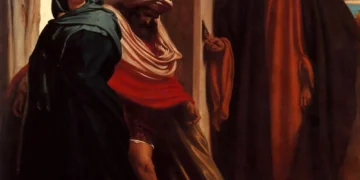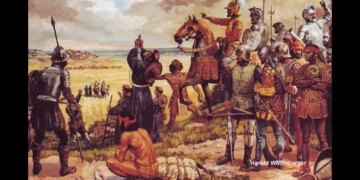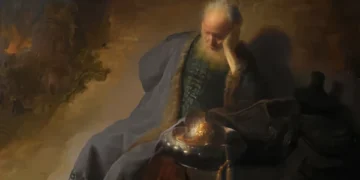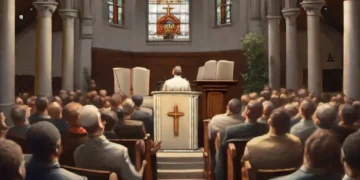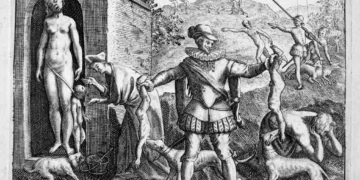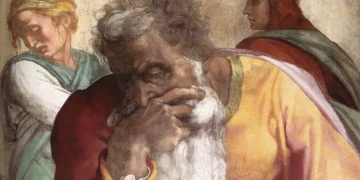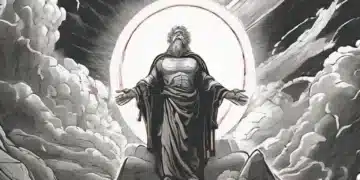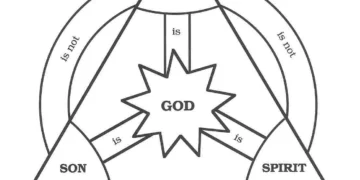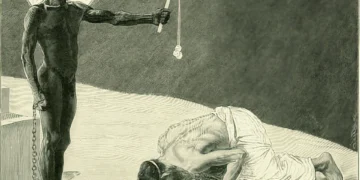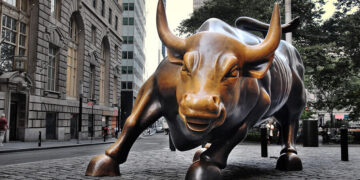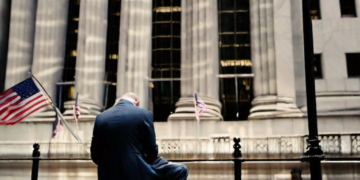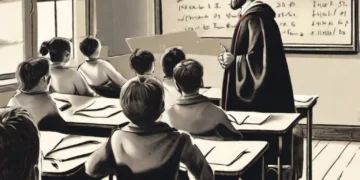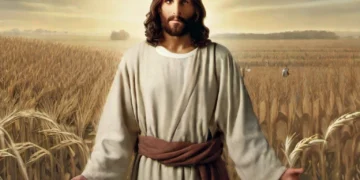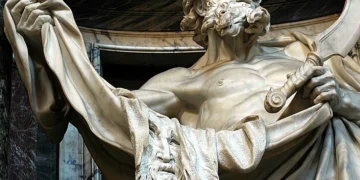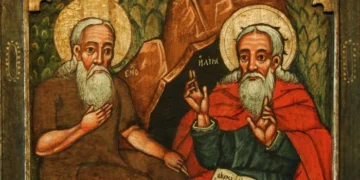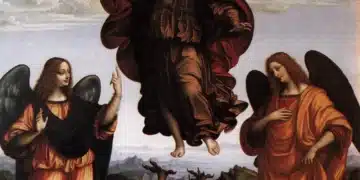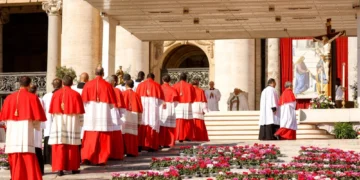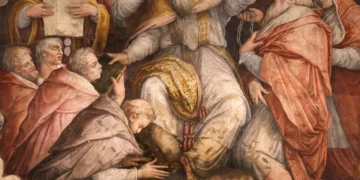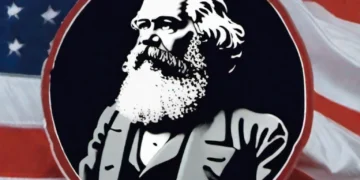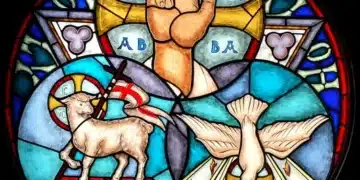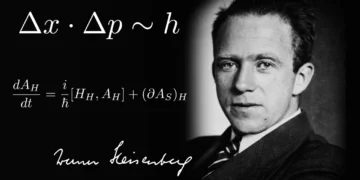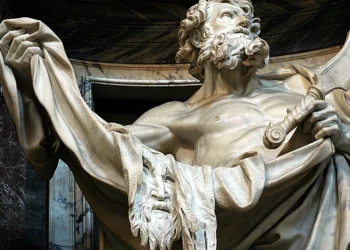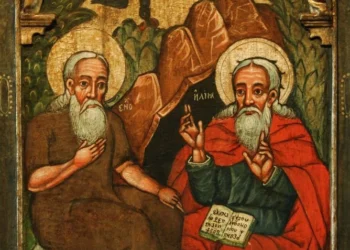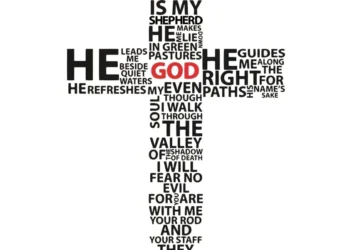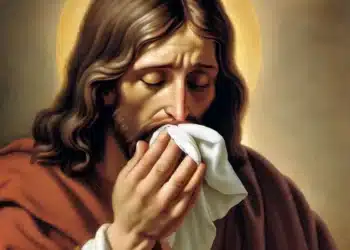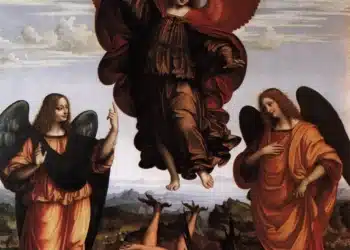In the heart of Rome, a visitor finds themselves standing in an ornate church, gazing upon a breathtaking masterpiece. A seemingly endless number of images depicting the face of Jesus Christ adorns the walls, each one slightly different from the other. The diverse representations of Christ’s visage through art is a clear testament to the powerful role that art has played in shaping Jesus Christ’s iconography throughout history.
The Diverse Cultural Depictions
The depiction of Jesus Christ in art has been influenced by various cultures, regions, and historical periods, reflecting the different perspectives and beliefs of people across time and geography. Here are some examples:
- Early Christianity (1st-5th century): In the early Christian period, Jesus was often depicted as a beardless, youthful figure, reflecting the cultural ideal of masculine beauty in the Greco-Roman world. This image of Jesus was promoted by the early Christian church to emphasize his divinity and innocence. One of the most famous examples is the “Good Shepherd” image from the Catacombs of Rome.
- Byzantine period (5th-15th century): In the Eastern Orthodox tradition, Jesus was often depicted in a more formal, iconic style, with a long beard and a stern expression. This representation was meant to convey his divine nature and authority. The most famous example is the “Christ Pantocrator” (Christ the Almighty) icon from the Hagia Sophia in Constantinople.
- Medieval period (12th-15th century): During the Middle Ages, Jesus was often portrayed as a king, reflecting the feudal society of the time. He was depicted with a crown, scepter, and other royal symbols, emphasizing his role as the King of Kings. One of the most famous examples is the “Crowned Christ” from the Chartres Cathedral in France.
- Renaissance (15th-17th century): With the revival of classical culture during the Renaissance, Jesus was often depicted in a more humanistic and naturalistic way, emphasizing his human nature and emotions. One of the most famous examples is Leonardo da Vinci’s “The Last Supper,” where Jesus is shown as a sensitive and compassionate figure, surrounded by his apostles.
- Baroque period (17th-18th century): During the Baroque period, Jesus was often depicted in a dramatic and emotional way, reflecting the intense religious sentiment of the time. One of the most famous examples is the “Ecce Homo” (Behold the Man) by Antonello da Messina, which shows Jesus with a crown of thorns and a sorrowful expression, emphasizing his suffering and humanity.
- Latin America (16th-18th century): In Latin America, Jesus was often depicted with a darker skin tone and indigenous features, reflecting the mixed racial heritage of the population. One of the most famous examples is the “Black Christ” from the Church of San Francisco in Quito, Ecuador.
- Modern period (20th-21st century): In contemporary art, Jesus has been depicted in a wide range of styles and forms, reflecting the diversity of cultural influences and artistic expressions. One of the most famous examples is the “Christ of the Millennium” by the British artist David Hockney, which shows Jesus as a modern, gay man, challenging traditional representations of masculinity and sexuality.
These are just a few examples of how the depiction of Jesus Christ in art has been influenced by different cultures, regions, and historical periods. The various representations of Jesus reflect the diverse perspectives and beliefs of people across time and geography, and demonstrate the enduring significance of this religious figure in human history.
Varying physical appearances, characteristics, and attributes assigned to Jesus in different cultures and art styles.
Art has played a powerful role in shaping the iconography of Jesus Christ, with his physical appearances, characteristics, and attributes varying greatly across different cultures and art styles. From the early Byzantine representations to the Renaissance masterpieces, artists have embraced their own unique interpretations of the son of God, resulting in a rich tapestry of diverse depictions. In Western art, Jesus is typically portrayed with fair skin, flowing hair, and a serene countenance, emulating the idealized beauty of classical Greek and Roman figures. One iconic example of this portrayal is Leonardo da Vinci’s “The Last Supper,” where Jesus appears as a composed and dignified figure.
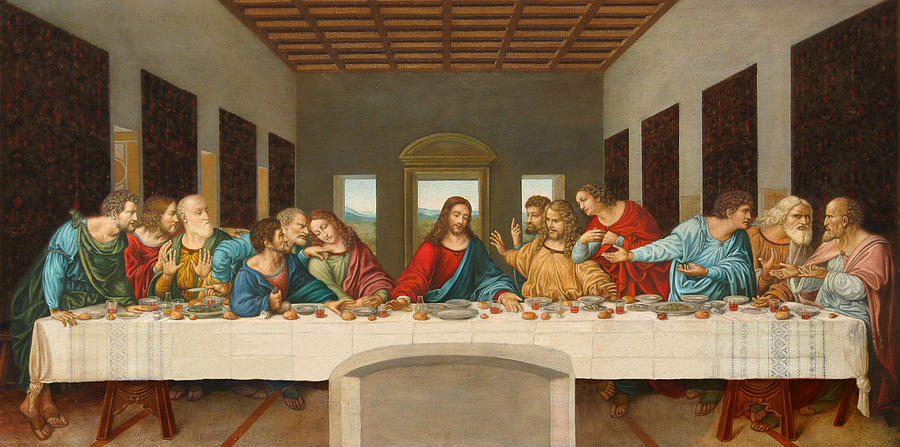
On the other hand, Eastern art, particularly Byzantine and Russian Orthodox traditions, showcases a more stoic and solemn Jesus, emphasizing his divinity and spiritual authority. These portrayals often feature a serious expression, a long beard, and elongated eyes, exemplified by the iconic Byzantine mosaic of Jesus in the Hagia Sophia. Moving beyond the Western and Eastern traditions, various global cultures have infused their own unique characteristics into depictions of Jesus. In Latin American art, for instance, Jesus is often shown with brown skin and indigenous features, connecting him closely to the native populations.
The famous painting of “Cristo Negro” in Portobelo, Panama, depicts a dark-skinned Jesus, resonating strongly with the African diaspora. Similarly, Ethiopian Orthodox Christian art presents Jesus with distinctively African features, reflecting the country’s rich religious and cultural heritage. These diverse representations of Jesus in different cultures and art styles not only highlight the universality of his teachings but also demonstrate how art can reflect the personal and collective identities of different societies.
Key icons associated with Jesus, such as the Sacred Heart, the Pantocrator, and the Ecce Homo.
Art has played a profound and influential role in shaping the iconography of Jesus Christ throughout history. From paintings to sculptures, artists have used their creative abilities to express and depict various key icons associated with Jesus. One such icon is the Sacred Heart, which represents Jesus’ boundless love and compassion for humanity. Artists have portrayed this symbol through intricate and detailed artwork, often showing Jesus with a glowing heart surrounded by flames or thorns. Another significant icon is the Pantocrator, a representation of Jesus as the ruler and judge of all creation. This image typically showcases Jesus seated on a majestic throne, holding a scepter and displaying a stern expression, signifying his divine authority.
Furthermore, the Ecce Homo, meaning “Behold the man,” is an iconic depiction of Jesus during his Passion and Crucifixion. Artists have depicted him with a crown of thorns, bloodied and beaten, evoking a profound sense of empathy and reflection. These key icons associated with Jesus not only visually represent his qualities and essence but also serve as powerful tools for believers to connect with their faith and deepen their understanding of his teachings. An examination of the intricate details and symbolism within these images can provide viewers with a deeper appreciation for the central figure of Christianity, inviting contemplation and spiritual reflection.
Reinterpreting Scripture through Visual Language
How Biblical descriptions of Jesus’ appearance have been translated into visual narratives through art
Art has played a profound and influential role in shaping Jesus Christ’s iconography, translating the biblical descriptions of his appearance into captivating visual narratives. Through vivid language and specific examples, one can witness the transformative power of art in bringing to life the image of Jesus as described in the Bible. For instance, in Leonardo da Vinci’s renowned painting, “The Last Supper,” Jesus is portrayed as a figure with long flowing hair, an elevated brow, and serene, gazing eyes, reflecting the biblical description of his majestic presence. Similarly, Michelangelo’s iconic sculpture, “David,” depicts a youthful and athletic Jesus, reflecting the biblical references to his strength and righteousness.
These examples and countless others demonstrate how art has the ability to shape and perpetuate the image of Jesus, creating a visual representation that transcends the mere words of Scripture. In doing so, art has not only served as a means of illustrating biblical accounts but has also become a catalyst for spiritual contemplation and a source of inspiration for believers throughout history. By visually capturing the essence of Jesus, art has given individuals a tangible connection to their faith, allowing them to project their own interpretation onto his image and fostering a personal relationship with the divine. The artful representation of Jesus’ appearance has endured over centuries, ultimately reinforcing the belief in his divinity and creating an enduring legacy that continues to impact the Christian faith.
The influence of textual interpretations, religious beliefs, and personal experiences in artists’ depictions of Jesus
The powerful role of art in shaping Jesus Christ’s iconography cannot be underestimated. Through the medium of visual representation, artists have the opportunity to interpret and depict Jesus based on their own textual interpretations, religious beliefs, and personal experiences. These influences heavily influence the final portrayal, creating a diverse range of images that reflect the artist’s unique perspective and understanding of Jesus.
The role of artists in presenting Jesus Christ as both a divine and human figure, balancing elements of divinity and humanity through visual symbolism
Artists have played a significant role in presenting Jesus Christ as both a divine and human figure through the ingenious use of visual symbolism. Through their creations, artists have sought to strike a delicate balance between the elements of divinity and humanity, creating iconic representations that inspire devotion and captivate the imagination. One such example can be seen in Leonardo da Vinci’s “The Last Supper,” where Jesus is depicted as both divine and human. In this masterpiece, da Vinci uses various subtle elements to convey both aspects of Jesus’ nature. The way Jesus is depicted in a central position, radiating a sense of calm and serenity, represents his divinity.
However, da Vinci also emphasizes the human side of Jesus through the intricate details of facial expressions and postures, portraying the emotions and vulnerability of Jesus and his disciples. Similarly, in Michelangelo’s famous statue, “Pieta,” the artist manages to convey the divine and human nature of Jesus through skillful sculpting. Mary’s delicate and sorrowful gesture while cradling the lifeless body of Jesus highlights the human suffering and compassion, while the perfect form and elegance of the figures allude to Jesus’ divine nature.
These artistic masterpieces not only provide viewers with a visually stimulating experience, but also serve as powerful reminders of the complexity of Jesus’ nature, merging the divine and human effortlessly through the language of art. Overall, artists have played a crucial role in shaping Jesus Christ’s iconography by skillfully blending elements of divinity and humanity, leaving an indelible mark on religious imagery and inspiring millions worldwide.
The Influence of Historical Movements on Jesus’ Iconography
How significant artistic movements, such as the Renaissance or Baroque, have shaped the representation of Jesus in art
Artistic movements such as the Renaissance and Baroque have played a momentous role in shaping the representation of Jesus in art, imbuing his iconography with power and cultural significance. During the Renaissance, artists like Leonardo da Vinci and Michelangelo sought to capture Jesus as a divinely human figure, emphasizing his humanity while still maintaining an aura of divinity. Leonardo’s famous painting, “The Last Supper,” depicts a poignant moment of connection between Jesus and his disciples, capturing the emotions and tensions of the scene.
Similarly, Michelangelo’s iconic sculpture, “Pieta,” showcases Jesus after his crucifixion, revealing an incredibly lifelike and sorrowful representation. The Baroque movement, on the other hand, embraced a more dynamic and theatrical approach, seeking to evoke intense emotions in viewers. Caravaggio’s painting, “The Incredulity of Saint Thomas,” for instance, portrays Jesus revealing his wounds to doubting Thomas in a highly dramatic fashion, with realistic lighting and expressive gestures.
Through these artistic movements, Jesus became not just a revered religious figure, but a relatable, compassionate, and emotionally charged subject for viewers to connect with, thus solidifying his presence in the collective imagination.
How changing political, religious, and social contexts influenced the portrayal of Jesus during these periods
Art has played an immense and powerful role in shaping the iconography of Jesus Christ throughout history. From the early depictions in the catacombs of Rome to the Renaissance masterpieces, the portrayal of Jesus has evolved, influenced by changing political, religious, and social contexts.
This transformation can be witnessed with the shift from the humble shepherd image to the triumphant figure of Christ Pantocrator during the Byzantine era, reflecting the dominant political and religious ideologies of the time. Similarly, during the Protestant Reformation, artists focused on portraying Jesus as a compassionate mediator between God and man, emphasizing the individual’s direct relationship with the divine.
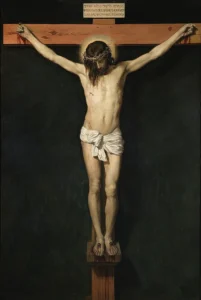
The social and political unrest of the 19th and 20th centuries brought forth a portrayal of Jesus as a revolutionary and champion of the oppressed in works like Diego Velázquez’s “Christ Crucified” and Robert Rauschenberg’s “Untitled (Spread), ” respectively. These examples highlight how the portrayal of Jesus in art has been a direct response to the prevailing ideologies, reflecting the desires and aspirations of different periods.
Additional information on the influence of specific movements, such as the counter-reformation or the rise of liberation theology, could further strengthen the understanding of the complex relationship between art and the portrayal of Jesus in different historical contexts.
The use of various artistic mediums, techniques, and styles in portraying Jesus, reflecting both individual artistic expression and collective societal values
Art has played a profound and influential role in shaping the iconography of Jesus Christ. Through the use of diverse artistic mediums, techniques, and styles, artists have been able to communicate their own unique perspectives and interpretations of the Savior, alongside reflecting the collective societal values of their time.
For instance, the use of oil paints and intricate brushstrokes in Leonardo da Vinci’s “The Last Supper” not only highlighted his technical expertise but also conveyed the solemnity and importance of the event. Similarly, the use of stained glass windows in Gothic cathedrals allowed artists to capture the divine radiance and transcendental nature of Jesus. The portrayal of Jesus as a shepherd in early Christian catacomb artwork represented his role in leading and protecting his followers.
This diversity in artistic expression and representation of Jesus enables viewers to connect with Him on a personal and cultural level, resonating with their own beliefs and values. Therefore, art serves as a powerful medium that not only captures the essence of Jesus but also reflects the cultural, social, and personal ideologies of its creators and viewers, shaping the ongoing development of Jesus Christ’s iconography.
Art as a Powerful Tool of Devotion and Worship
The central role of religious art in inspiring devotion and connecting believers with their faith.
Religious art holds a paramount position in the shaping of Jesus Christ’s iconic imagery, playing a powerful role in inspiring devotion and establishing a deep connection between believers and their faith. Throughout history, countless pieces of artwork have captured the essence of Christ’s life, forming a visual representation that resonates with the spiritual sensibilities of individuals.

Crucifixion scenes, such as the masterpiece by Matthias Grünewald known as the Isenheim Altarpiece, vividly portray the suffering and sacrifice of Jesus, evoking a profound emotional response in viewers and serving as a reminder of the boundless love and salvation he offered. Similarly, religious sculptures like Michelangelo’s renowned Pietà at St. Peter’s Basilica in Vatican City exude a sense of divine empathy and compassion, inviting believers to contemplate the ultimate sacrifice made by Jesus for humanity’s redemption.
The mesmerizing beauty and attention to detail in these artworks stir deep religious fervor, encouraging believers to connect with their faith on a profound level. Additionally, religious paintings, such as Leonardo da Vinci’s The Last Supper, capture significant moments from Jesus’ life and offer visual narratives that stimulate spiritual contemplation, fostering a sense of devotion and inspiring believers to connect with the divine.
The central role of religious art in shaping Jesus Christ’s iconography lies in its ability to transcend language barriers and touch the soul of individuals, regardless of their cultural or linguistic background. Artistic depictions of Jesus not only provide a tangible representation of his divine nature but also serve as a catalyst for contemplation, devotion, and a deepened connection with the underlying principles of Christianity.
Whether it is through the serene gazes captured on an icon or the dynamic brushstrokes in a Renaissance masterpiece, religious art amplifies the power of faith, allowing believers to forge a profound bond with their Savior and illuminate the path to spiritual enlightenment.
The impact of iconic images of Jesus Christ on personal and collective worship traditions.
Art has played a powerful role in shaping the iconic representation of Jesus Christ throughout history. Through paintings, sculptures, and other artistic forms, artists have created enduring images that have influenced personal and collective worship traditions. The impact of these iconic images can be seen in how they shape the way individuals perceive and connect with Jesus. For example, the iconic image of Jesus with outstretched arms, as seen in Leonardo da Vinci’s “The Last Supper,” conveys a sense of compassion and acceptance, evoking a deep emotional response from believers.
Another example is the iconic representation of Jesus on the cross, with his head bowed and bloodied, conveying a sense of suffering and sacrifice. This image, as seen in countless paintings throughout history, not only serves as a reminder of Jesus’ crucifixion but also prompts believers to contemplate their own spirituality and the meaning of the crucifixion in their lives. Furthermore, these iconic images of Jesus have also influenced collective worship traditions.
For instance, the depiction of Jesus as the Good Shepherd, with a lamb cradled in his arms, has become a symbol of comfort and guidance for many Christian communities. This image is often incorporated into stained glass windows, church décor, and religious artifacts, creating a visually striking representation of Jesus that brings solace and inspiration to worshippers.
In conclusion, art has played a vital role in shaping Jesus Christ’s iconography, contributing to personal and collective worship traditions. These iconic images, such as those depicting compassion, suffering, and guidance, have a profound impact on individuals’ spiritual experiences and foster a deeper connection with Jesus Christ.
The transcendent power of art, which brings spiritual experiences to life and fosters a deeper connection between individuals and their religious beliefs
Art has played a powerful role in shaping the iconography of Jesus Christ, bringing his spiritual experiences to life and creating a profound connection between individuals and their religious beliefs. Through the transcendent power of art, the image of Jesus has become a universal symbol, recognized and revered by people of different cultures and backgrounds.
Authors note
Over the course of centuries, art has become a potent medium for creating and shaping Jesus Christ’s iconography. This versatile and thought-provoking form of expression enables diverse cultures, artists, and historical periods to leave their mark on the visualization of Jesus’ presence. From the humblest of chapels to the grandest of cathedrals, these visual representations continue to evoke powerful emotions, inspire spiritual experiences, and bring believers closer to their faith. The power of art in shaping Jesus Christ’s iconography serves as a timeless reminder of the significance of visual language in religious narratives and the lasting impact it holds within society.

